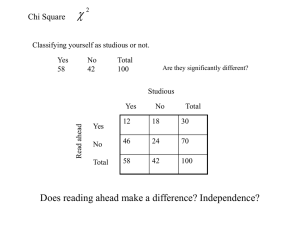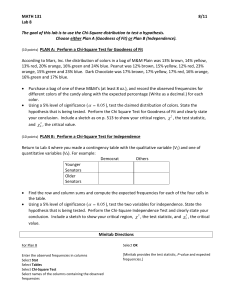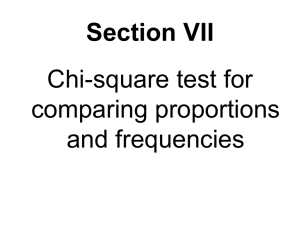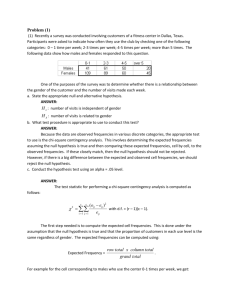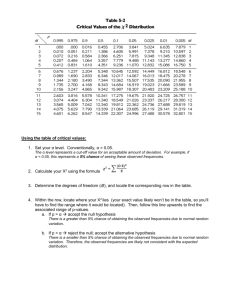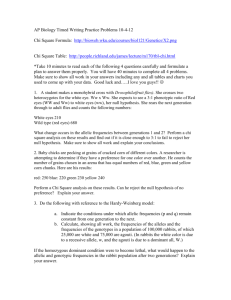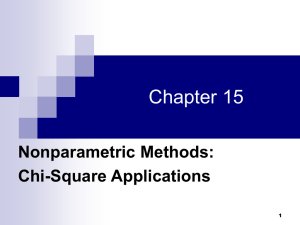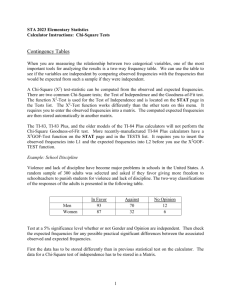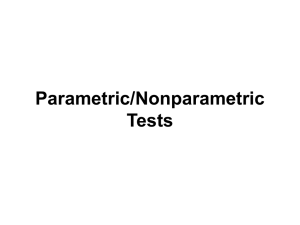Psychology 242, Statistics Handout #3
advertisement
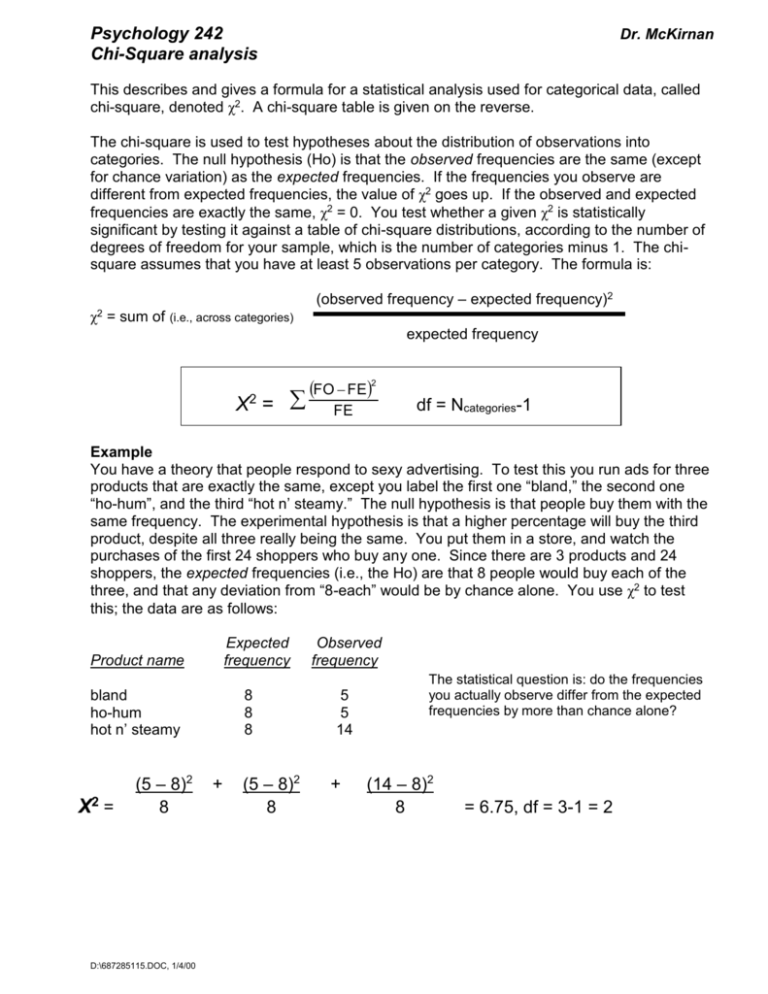
Psychology 242 Chi-Square analysis Dr. McKirnan This describes and gives a formula for a statistical analysis used for categorical data, called chi-square, denoted χ2. A chi-square table is given on the reverse. The chi-square is used to test hypotheses about the distribution of observations into categories. The null hypothesis (Ho) is that the observed frequencies are the same (except for chance variation) as the expected frequencies. If the frequencies you observe are different from expected frequencies, the value of χ2 goes up. If the observed and expected frequencies are exactly the same, χ2 = 0. You test whether a given χ2 is statistically significant by testing it against a table of chi-square distributions, according to the number of degrees of freedom for your sample, which is the number of categories minus 1. The chisquare assumes that you have at least 5 observations per category. The formula is: (observed frequency – expected frequency)2 χ2 = sum of (i.e., across categories) expected frequency X = 2 FO FE2 FE df = Ncategories-1 Example You have a theory that people respond to sexy advertising. To test this you run ads for three products that are exactly the same, except you label the first one “bland,” the second one “ho-hum”, and the third “hot n’ steamy.” The null hypothesis is that people buy them with the same frequency. The experimental hypothesis is that a higher percentage will buy the third product, despite all three really being the same. You put them in a store, and watch the purchases of the first 24 shoppers who buy any one. Since there are 3 products and 24 shoppers, the expected frequencies (i.e., the Ho) are that 8 people would buy each of the three, and that any deviation from “8-each” would be by chance alone. You use χ2 to test this; the data are as follows: Expected frequency Product name bland ho-hum hot n’ steamy X2 = (5 – 8)2 8 D:\687285115.DOC, 1/4/00 8 8 8 + (5 – 8)2 8 Observed frequency 5 5 14 + The statistical question is: do the frequencies you actually observe differ from the expected frequencies by more than chance alone? (14 – 8)2 8 = 6.75, df = 3-1 = 2 Psychology 242, Statistics Handout #3 Chi-Square analysis, p. 2 Dr. McKirnan If alpha is p <.05, you would look up the value for 2 degrees of freedom in the 5% column on the table below to find out the critical value for this statistical test. Is the χ2 you obtained greater than the critical value? Since it is (6.75 v. 5.99), you can assume that the choice of the hot n’ steamy product occurred more often than you would expect by chance. That is, you reject the null hypothesis and conclude that, indeed, sex sells. D:\687285115.DOC, 1/4/00
